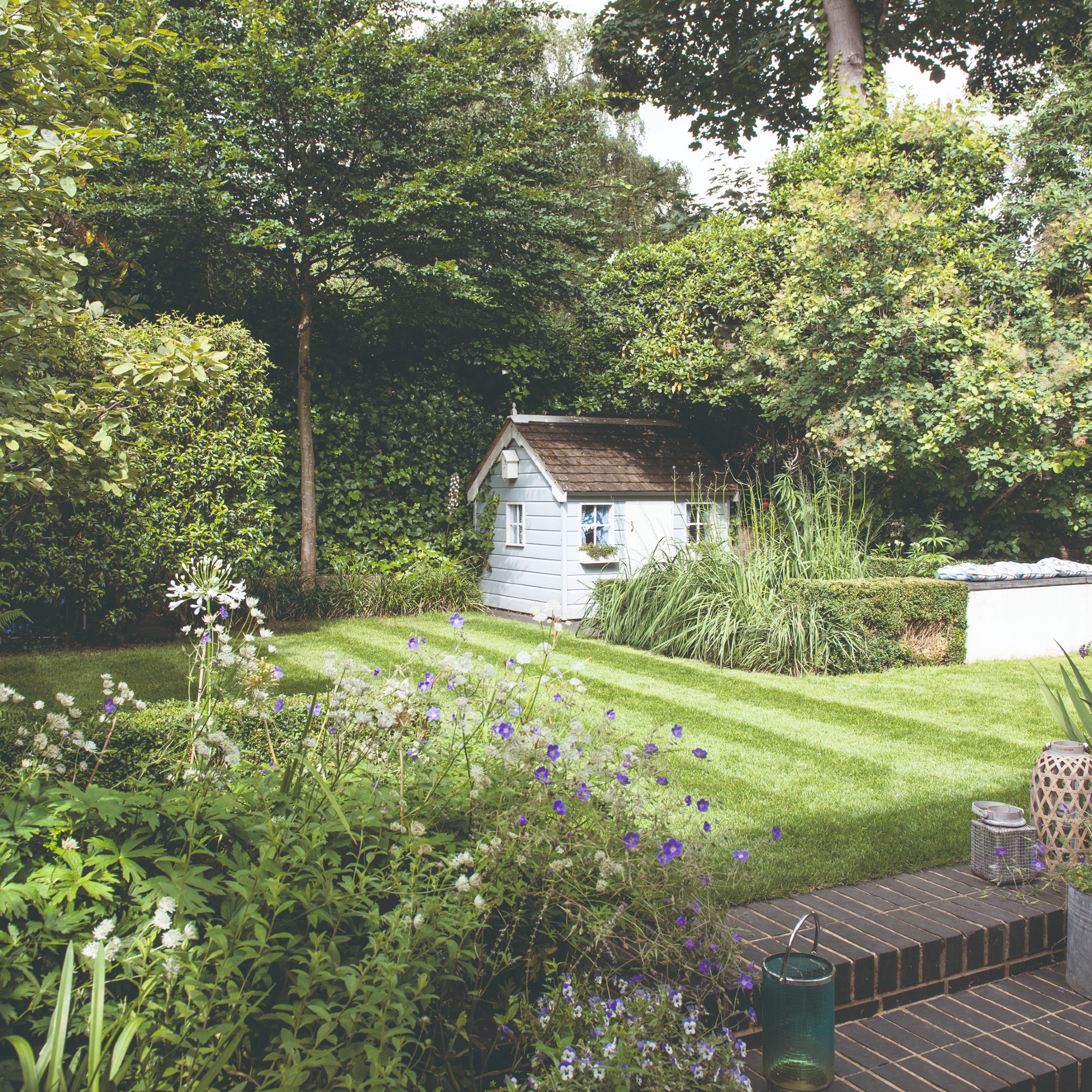
Summer is prime time for cutting the grass, but the sudden downpour has caused many of us to wonder should you cut wet grass? Well, if you're looking for a valid excuse to skip this chore, it turns out that this might be doing your lawn (and your lawnmower) more harm than good.
Now is technically the time to give your lawn a trim and take your best lawnmower for a spin. But in true British fashion, our “summer” has been awash with rain, and this poses a serious problem when it comes to lawn care.
Our lawns are growing faster than you can say “weed killer” thanks to warm temperatures, but high levels of rain. But if you are debating if you should grab a rain coat and cut wet grass, or wait until it's dry to restore order to your lawn, we've asked the experts to weigh in.

Should you cut wet grass?
While looking out of the window and seeing an overgrown jungle of grass can make any houseproud gardener shiver, don't rush into cutting wet grass.
'As we endure a lot of unpredictable, rainy weather in the UK, mowing the lawn can pose many challenges for most lawnmowers, so we recommend that you avoid using a lawnmower in the wet weather where feasible,' says Darren Feasey, Brand and Product Director at Flymo.
But why? And what would happen if you did cut wet grass?
The dangers of cutting wet grass
In the back of your mind, you may distinctly remember someone telling you that you should never cut wet grass. You might not remember who told you that or why someone told you that… but it’s there, right? Well, there’s a reason for that. Although nobody can stop you from cutting wet grass, you might want to first consider the dangers of cutting wet grass.

1. It’s unsafe
Water makes everything slippery, and grass can be especially slippery when it's wet. This increases your chances of falling over and injuring yourself, as lawnmowers are also harder to control in slippery conditions. If you’re already unstable on your feet, it’s best to avoid such a risk. And that’s before we mention the electric shock risk with corded lawnmowers or lawn trimmers.
2. The cuttings will clump together
Ryan Patterson from Husqvarna UK says, "'If you've experienced heavy rain, we would recommend avoiding cutting the lawn as very wet grass is more likely to clump and stick to the lawn mower deck.' This is inevitable when you cut wet grass, as the moisture makes the cuttings stick to everything - even the blades themselves. This can ultimately put a strain on your lawnmower and cause it to overheat.
3. You might ruin your lawn
It’s important to cut your grass when the ground underneath is hard. When the grass is saturated and wet, the wheels of your lawnmower can dig into the soil, pulling it up and sometimes leaving giant craters in its wake. As if that wasn't enough, 'You run the risk of spreading fungal diseases and making muddy patches when you’re cutting wet grass,' says gardening expert Calum Maddock at HomeHow.co.uk.

4. You won’t get an even cut
Whether you want stripes in your lawn or you just want an even cut, cutting wet grass won’t give you that. Even the best lawnmowers on the market can’t perfectly slice through wet grass that wants to stick to the blades, so your grass will likely look patchy and uneven afterwards.
How to cut wet grass safely
Of course, we understand that sometimes you have no choice when it comes to cutting the grass. Whether you’re selling your house and need your garden to look perfect for viewings, or you just can’t stand your unruly grass any longer, you won’t get locked up for choosing to cut wet grass.
David Mitchell, Buyer for Garden and Seasonal at Homebase, says, 'As far as we’re concerned, if it’s growing, don’t stop mowing.' However, it’s important to take precautions and understand how to cut wet grass safely.
First, it’s a good idea to remove as much surface water as possible. To do this, drag a hosepipe horizontally across the grass, as this will act as a makeshift squeegee. Then, 'Try to cut higher than normal at around two inches, and make sure your blade is as sharp as possible for the cleanest cut,' says David.
If you can do this in smaller shorter sections. By stopping every so often, emptying the basket, and wiping the blades clean, you should be able to stop the grass from clumping together and your mower from overheating.

You might also want to re-assess the mower you're using. Calum from HomeHow states, 'If you’re thinking of cutting wet grass on a more regular basis, using a lighter mower will lessen the impact on your lawn. There are also mowers built for wet as well as dry cutting, so it’s worth doing a bit of research to ensure you’re using the right machine.' The Gardena Handymower could be a good option for this.
But while it's easy to focus on the downsides of cutting wet grass, Homebase's Mitchell wants us to focus on some positives, too. 'There are some great ways to make the most of having a wet lawn too, such as seeding the bald patches ready for spring. Also, if you apply moss control on a drizzly or wet day, it will soak into your lawn even faster.'
The best time of day to cut grass
Mowing your grass correctly and at the right time is the best way to make your grass look greener. But when is that prime time? According to experts, the best time of day to cut the grass is either mid-morning or late afternoon.
Cutting the grass when it’s too wet OR too dry puts a huge amount of stress on your grass. But if you wait for the morning dew to burn off or for the midday sun to dim, you can avoid this unnecessary stress.

FAQs
How long should I wait to mow the grass after it rains?
Ideally, you should wait until your grass is dry before you get the lawnmower out. If it was a light shower, you should be able to start mowing after about two hours. However, it’s hard to gauge a timescale when there’s been a heavier downpour - as you could have to wait anything from five hours to two days.
The best way to determine whether it’s dry enough to cut the grass is to go outside in open-toe shoes. If you can walk through the grass without your feet getting wet, you should be good to go.
When should you not cut grass?
You shouldn’t cut grass straight after a heavy rainfall or when the ground is soaking wet. But on the flip side, you also shouldn’t cut the grass when the ground is too dry. Because of this, it’s best not to cut grass during the winter months or during a heatwave or drought, as this will create unnecessary stress for your lawn.







